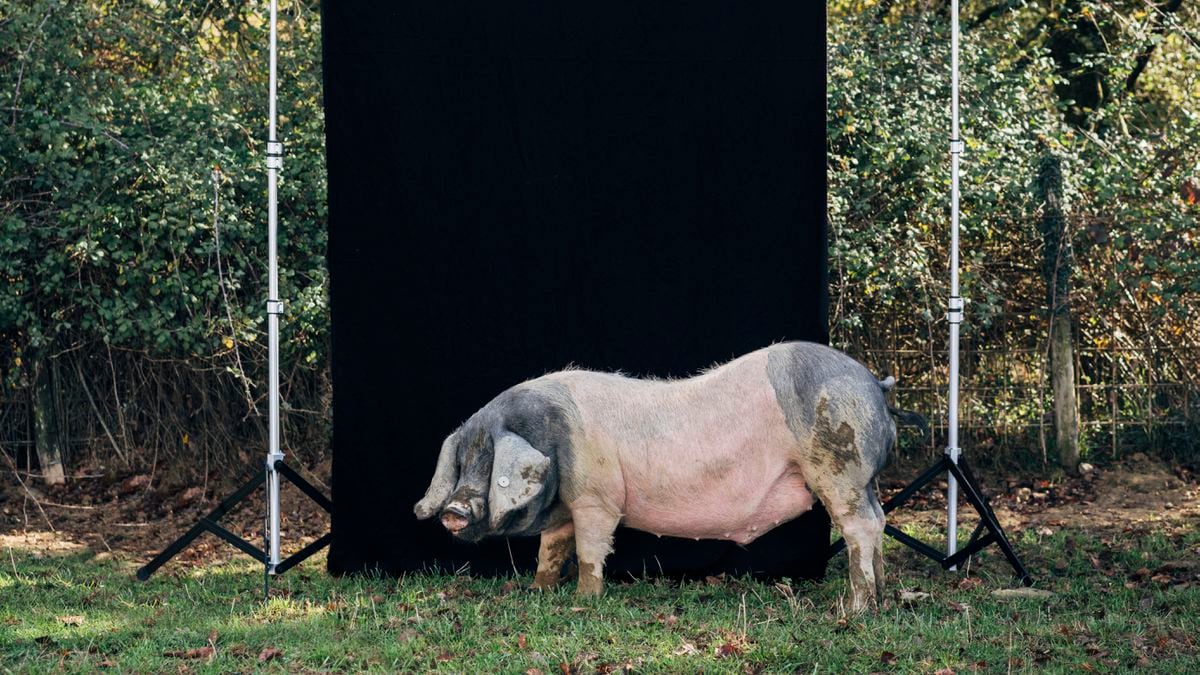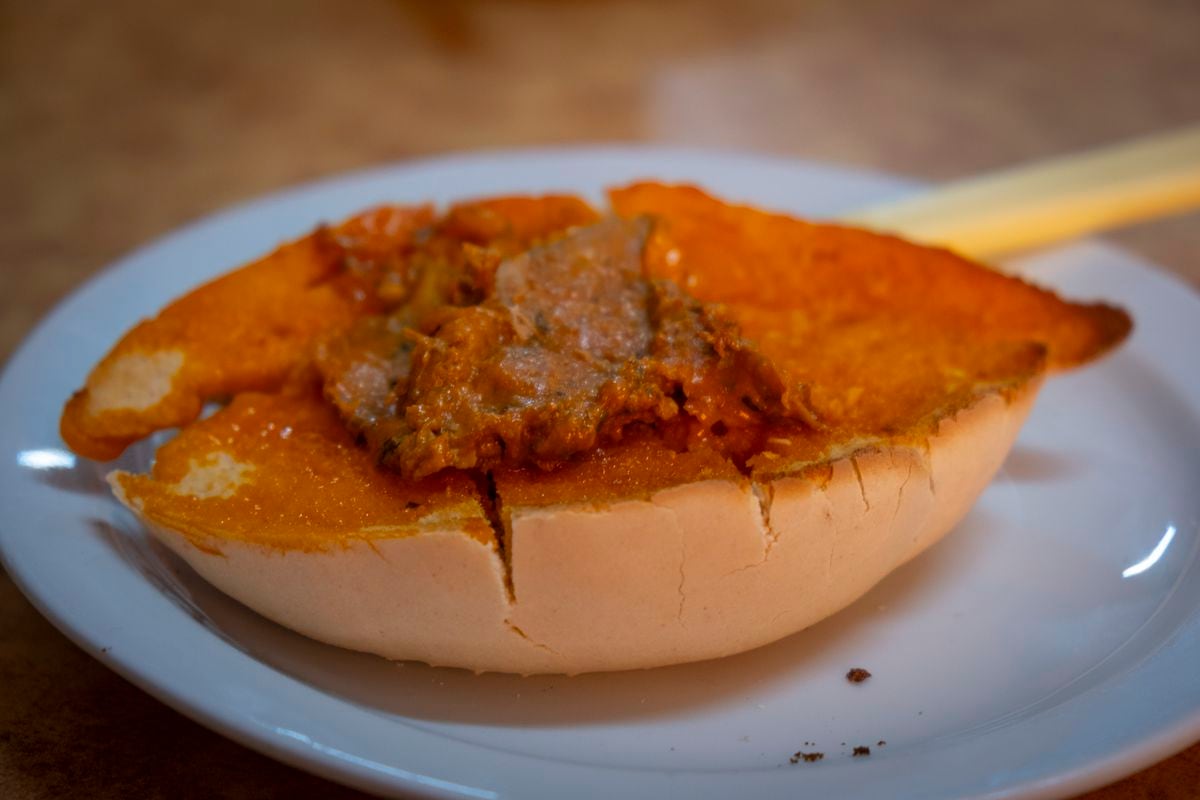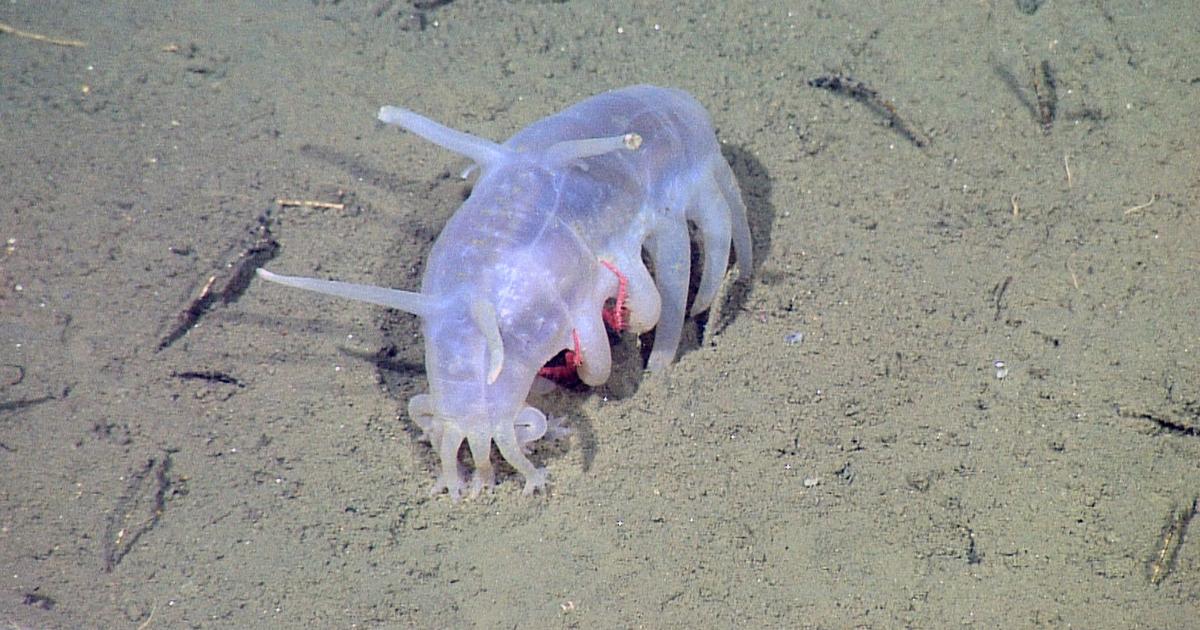Noon in the fields of Arruitz, in the middle of the Larraun valley, in front of the imposing
malloas
of the Sierra de Aralar.
At the Maskarada pig farm, the eight-hectare property run by José Ignacio Jauregi a stone's throw from the Navarrese town of Lekunberri, where he was born, and halfway between San Sebastián and Pamplona, two hundred black-headed individuals, black ass, short legs and huge ears run around happily or rest peacefully under a warm sun in the shade of hazelnuts, chestnuts and oaks.
It is the country paradise of the
Basque txerri,
a breed that people like the French farmer and delicatessen Pierre Oteiza, the Baztan farmer Bixente Goñi, the Biscayan researcher María José Beriain or Jauregi himself knew how to save from extinction in time.
The
euskal txerri
—which José Ignacio Jauregi,
Joxi,
prefers to call
nabar beltza
or directly pío negro (
pie noir
in French)— was on the verge of disappearing as a swine species in the eighties, when his herd numbered barely 25 specimens between the north of Navarra and the south of Iparralde (French Basque Country).
At the beginning of the 20th century they had reached more than 100,000.
But its low productivity compared to that of the white pig and the cost of raising it had condemned it to a slow death.
The characteristic pinkish-black double coat is the main feature of the 'euskal txerri'.
Alex Iturralde
Times have changed and today Jauregi slaughters around 1,300 pigs a year.
But the sacrifice, which is carried out when the specimens are 10 or 11 months old and weigh between 120 and 130 kilos, is only one of the links in an integral process.
A 360-degree process that includes genetics, breeding, death (in the Salamanca town of Guijuelo), transformation, curing, packaging, sale and cooking of this animal with a charming gesture and tasty meat.
Maskarada is a farm, a processing, curing and packaging factory, a shop and a restaurant.
A family business with 11 workers run by José Ignacio Jauregi, the breeder and cook, and his wife, Amaia Chasco, who runs the shop and dining room.
They started 21 years ago and the adventure continues, now backed by rewards such as a Repsol Sun and various awards for food sustainability, including the Michelin Green Star that was awarded on the 22nd. Little by little, slowly but surely, Maskarada spreads by word of mouth in a community of faithful that grows every day, attracted as much by the curious biography of these impressive cutos as by the fresh produce and gastronomic preparations that come out of their kitchens.
Those faithful are not only the customers who come to eat or buy at the store,
Before deciding to buy his first pigs (two females and one male) on a farm in Oronoz-Mugaire, set up the farm in Arruitz and open the factory and restaurant in an industrial warehouse in Lekunberri, Jauregi officiated with his parents in the Ainhoa, one of the most popular bars in this Navarrese town.
Unbeknownst to him at the time, his fate was written: “My father killed pigs, and he died when I was 18 years old.
I began to kill some too, five or six a year, but I never thought I was going to dedicate myself to this, it was a coincidence.
Then we saw that this could offer quality, we made an investment and we began to produce more and more pigs," he explains as he drives along the county road that leads from Lekunberri to neighboring Aldatz, his father's town, in the middle of a bucolic landscape. of sheep, wild horses,
At the farm, Guillermo, a very nice Honduran ex-military and bodyguard who ended up in the deep north of Navarre, runs after the animals to tire them out so that they stay still for the photos.
The fact is that the good photographer has occurred to portray one of the sows in front of an elegant background of black cloth, almost as if we were talking about a Hollywood actress.
And in the long run, he will be right.
The sow ends up standing right in front of the cloth and looking at the camera.
The image is charming.
It is sad to think that he will live less than a year.
José Ignacio Jauregi, owner, breeder and cook of the Maskarada pig breeding company.
Alex Iturralde
Its owner praises the character of these animals.
“They have very kind gestures, it shows that they are not stressed and that they live happily,” says Jauregi, who recently got angry with one of the visitors.
“A girl came and said nothing but 'poor things, poor things'… and I don't know, in the end I got angry with her and told her: 'Hey, you don't know how these pigs live.
They are in their environment, they have no stress, they eat wonderfully and while they live, about 11 months, they live better than you and me”.
And the menu of these tenants of the Arruitz farm?
Every day, in the farm's hoppers, they eat a recipe based on cereals, wheat, barley, corn, soybeans, and at the end of their cycle, Jauregi and Guillermo give them an olive fat that provides, according to what they say, "a touch gastronomically interesting and a refinement of pork fat”.
The animal itself is responsible for completing its diet based on worms, grass and roots.
The final conclusion, in the form of a small tongue twister, seems obvious: an animal is what it eats, and what it eats shows on the palate of the person who later eats it.
And in this case, the person who raises and cooks them is categorical: "It is a luxury to know what you eat", whispers Jauregi, who is committed to an "absolutely sustainable" breeding, slaughtering, transformation, packaging and cooking process.
He denies the most regarding the inconvenience of consuming fats and, more specifically, pork fat.
This breeder and chef is clear: not all are the same.
The black piebald has a high percentage of infiltrated intramuscular fat that makes it attractive from a gastronomic angle, bringing it closer to the Iberian in that sense, even when dealing with completely different breeds with different diets.
But it is also, says his godfather, a healthy food because of how it is raised and what it eats: “From an organoleptic point of view, and this is scientifically proven, the quality of the fat from these pigs is very good.
In fact, one of our concerns is to ask restaurant customers how what they have eaten has been good for them, and practically all of them answer that their body has assimilated these fats well,
Autumn view of the Larraun valley, from the town of Aldatz, where the Jauregi family is from.Alex Iturralde
Today 160 mothers and 8 males live in Arruitz.
They look talkative.
When they are lying down they look like lying statues.
But when they get up and start running there is no stopping them, they are incredibly agile and fast.
Parallel to the breeding of pigs, Jauregi and his family carry out genetic work, aimed above all at ensuring that there is no consanguinity between them.
In 1920 the breed was already classified as a black piebald pig.
In 1985 it was on the verge of extinction, until the Frenchman Pierre Oteiza began to take care of them and save them in the Aldudes valley, in Iparralde (French Basque Country).
Oteiza, who today owns 10 stores in France where he sells black piebald products under the Kintoa PGI (protected geographical indication) —his genus is also sold in 25 other stores in France, Belgium and the United Kingdom—, was not the only angel of the care of this animal.
Before him, María José Beriain from Biscay, today Professor of Nutrition and Bromatology at the Public University of Navarra, also investigated and defended the
Basque txerri
as a breed and as a potential object of trade.
Beriain obtained important financial aid from the Government of Navarra, until he was able to set up the largest farm for this porcine subspecies in the La Barranca area.
But the public institutions got tired of being generous and ended up withdrawing the aid.
The more than 70 copies were condemned to slaughter.
But Beriain's will managed to have the pigs transferred to another Navarrese town, Oronoz-Mugaire, where
Joxi
Jauregi acquired the first copies of him.
Producing a specimen of black pius is equal to or more expensive than producing an Iberian pig, assures the owner of Maskarada: "In reality there is no market for this pig, the market in a certain way is created by you," he explains, adding: "Historically all this has changed a lot.
Before, pigs were all fatty, it was what you wanted.
But after World War II the market changed and began to demand pigs that were fast growing, leaner, and cheaper to produce.
That is why these, which are greasy, not very productive and have a hard time growing, almost disappeared”.
A specimen of black piú gives only 4 kilos of fresh loin.
A white pig can give 12.
Jauregi prepares his grilled ear dish with chimichurri.Alex Iturralde
Lekunberri's company was not born in any way as a restaurant business.
Its founder is clear about it: "The restaurant is the showcase in which we make our products known, it gives us visibility".
Its business model is based above all on the sale of fresh and cured products wholesale (ham, loin, chorizo, salchichón, chistorra, secreto, pluma, presa, truffled sausages, lardo with six months of maturation, pre-cooked sparrows…) .
And yet, Maskarada is also that, a restaurant.
And a restaurant that has already begun to leave behind its original vocation as a mere
show room
where to give visibility to some products.
In the kitchen, Jauregi and his team experiment non-stop, using friends and acquaintances with some culinary knowledge as grateful guinea pigs.
Under the enormous oil painting
Maskarada suletina
, by the Navarrese artist Emilio Sánchez Cayuela (who gives the company its name), they mix the chorizo, the salchichón and the loin with paprika extracted from glass peppers, with beets, with seaweed, with mussels, with citrus fruits, with forest mushrooms... Some of the results end up on the Maskarada menu, others end up in limbo.
On the day this visit took place,
Joxi
Jauregi landed unsuspected delicacies on the table, such as the black piebald pork belly tacos with anchovies or tomato, the lardo with truffle carpaccio, the grilled pig's ear with chimichurri or the pork chop steak tartare with a month of maturation
In the case of jowls, the very thin slices also land on the plate accompanied by tasty seasonal products, such as fresh asparagus, fresh artichokes or fresh anchovies, when appropriate.
As for the sausages, the declared intention is to give them back a lost gastronomic dignity.
The same one pursued, for example, by Bittor Arginzoniz at the Etxebarri in Atxondo, Bizkaia (sixth best restaurant in the world on the latest list of The World's 50 Best), where he serves a homemade chorizo dish.
Dewlap tacos on tomato from the country.
Jauregi also mixes this part of the pork with other ingredients as unexpected as anchovy.
Alex Iturralde
The challenge is not easy, recognizes the patron of Maskarada: "It is difficult to compete with the Iberian, but we are doing it, and that the price range is similar, well, actually we are with higher prices than the mid-range of the Iberian, And that is sometimes hard for people to understand.
But there is a current clientele, especially young people, who is open to trying new things..., and we are competitive there.
In addition, we do blind tastings of ham with highly educated people in the field of gastronomy, and there are usually many surprises”.
—The stigma of the acorn… If there is no acorn, there is no good ham, some like to say.
—Acorn is a marvel of nature and so are pigs fed with acorns, but the real acorn-fed Iberian market is very small, let's be serious, few people here eat acorn-bellota... It's the same as wild turbot, you They offer it everywhere, but we already know that many times it is not wild!
Wild is
Felisa
.
She is different.
She does not weigh 130 kilos, she is over 250. She walks her pink and blackish mass through the meadows of Arruitz.
In fact, she is the third
Felisa
that
Joxi
Jauregi has spared her life.
It all started when the first one, years ago, escaped twice from the truck in which she was going to travel to the slaughterhouse.
It was like an omen.
She had to be pardoned.
The current
Felisa
seems happy.
She still does not know that on December 21 she will travel to San Sebastián to become the great guest star of each year at the Santo Tomás Fair, one of the great popular festivals of the city.
She then she will come home.
Felisa
, the happy pig, and pink, and black, from Santo Tomás.
Subscribe to continue reading
Read without limits
Keep reading
I'm already a subscriber




/cloudfront-eu-central-1.images.arcpublishing.com/prisa/XNY27MS46VBKLNAE27ECITF4EM.jpg)



/cloudfront-eu-central-1.images.arcpublishing.com/prisa/JNKEYSPVIXFSA66UHYKQUNTSQA.jpg)